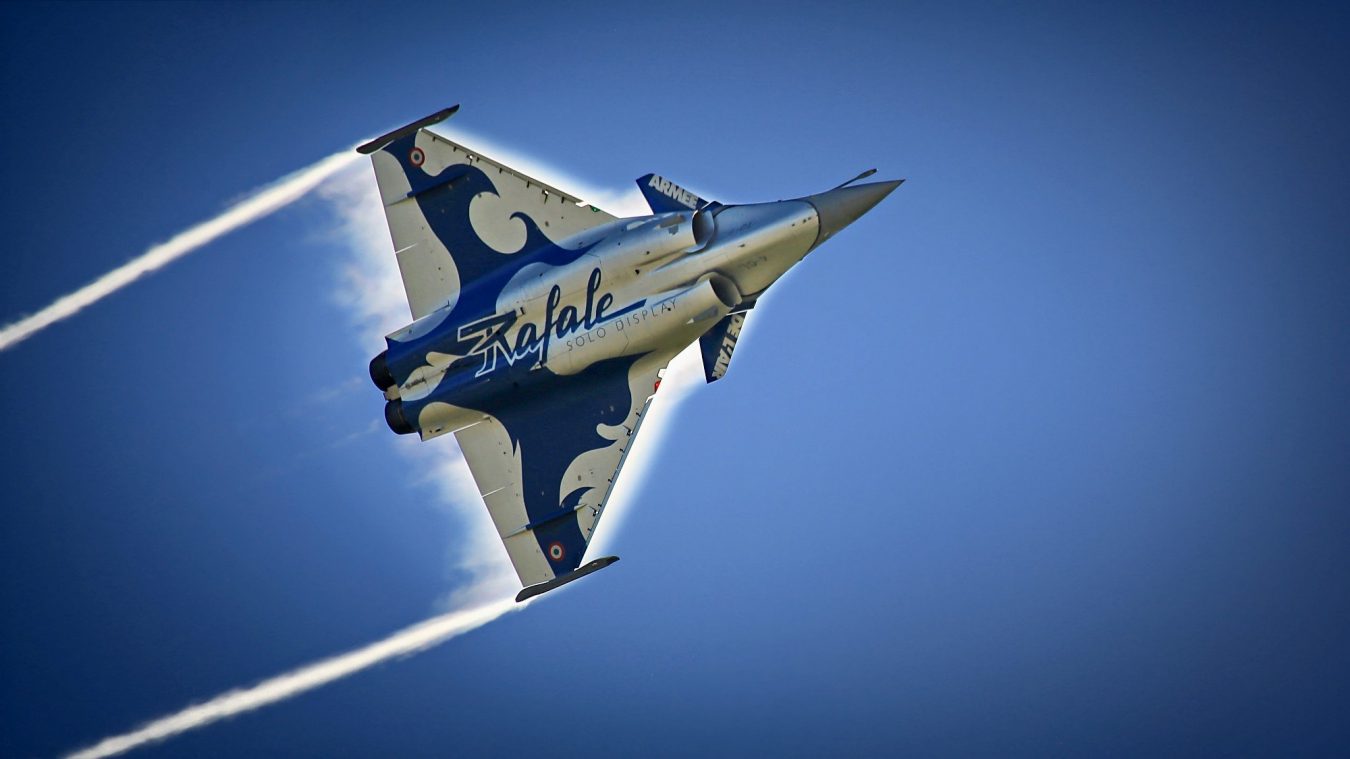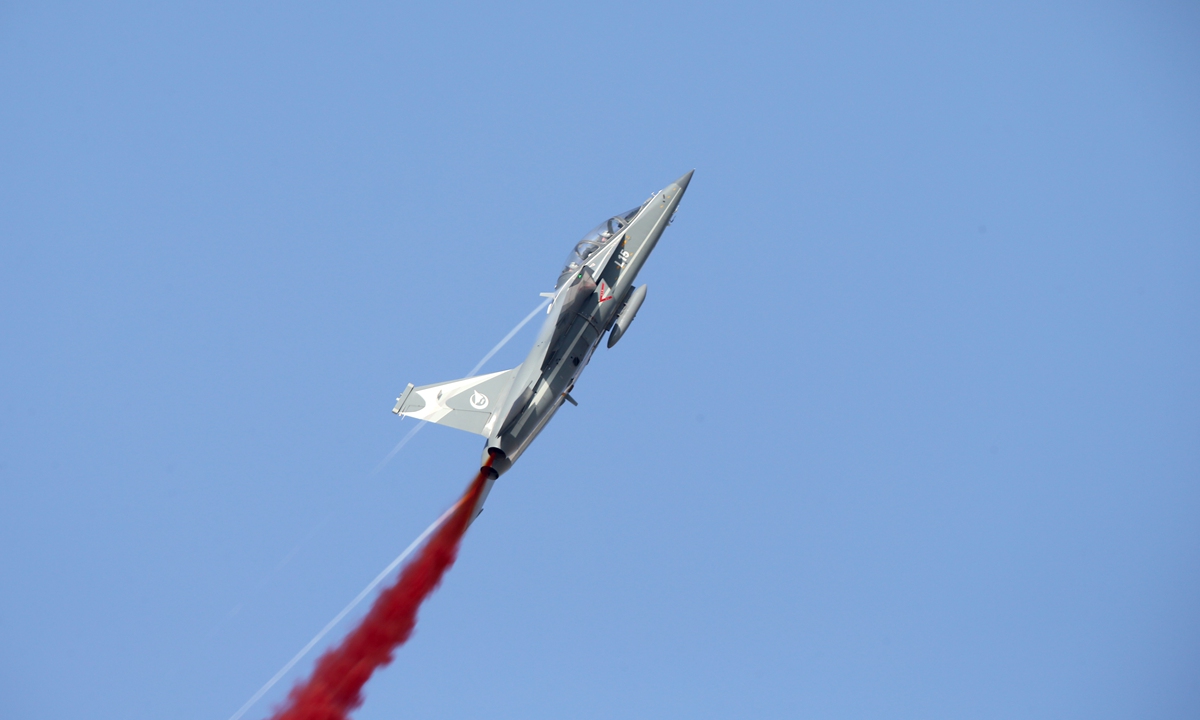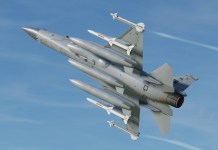The UAE will purchase a dozen of advanced Chinese jet trainers, a move that reflects a significant strategic shift in the country’s long-standing policy of obtaining solely Western military aircraft.
The UAE Defense Ministry will sign a contract with China National Aero-Technology Import & Export Corporation (CATIC) to procure the L15 training and light combat aircraft, with the possibility of purchasing another 36 planes later, the official Emirati news agency WAM reported.
The #UAE Air Force has announced plans to purchase 12 CATIC Hongdu L-15 jet trainers from China with options for a further 36 aircraft. https://t.co/x0N5mQDSDi
— Tony Osborne (@Rotorfocus) February 23, 2022
The acquisition, according to Tareq Abdulraheem Al Hosani, Chief Executive Officer of Tawazun Economic Council [the Emirates’ defense and security acquisitions authority], is part of continuous efforts to diversify and modernize the Air Force.
“We have reached the final stage in our talks with the Chinese side. The final contract will … be signed soon,” Al-Hosani was quoted as saying. Tawazun’s goal, according to WAM, was to “develop the UAE’s defense capabilities and achieve its strategic priorities.”
The news came at the end of a three-day joint trade expo – Umex and SimTex 2022 exhibition – held in Abu Dhabi, UAE. The exhibition was focused on unmanned systems, simulation, training, AI, robotics, and multi-use systems for the defense as well as civilian sector.
“The UAE Ministry of Defense has provided a Letter of Intention to the Chinese CATIC corporation for the purchase of 12 L-15 aircraft, and also has the intention to purchase additional 36 planes in the future.
The L-15 is an advanced trainer and a light combat aircraft, and is considered one of the latest technologies in this field,” said UAE Air Force Col. Abdulnaser Al Humeidi, the official spokesman for UMEX and SIMTEX show.
Al Humeidi told Breaking Defense that the exact value of the proposed agreement will be published by the MoD in the near future and this move is in accordance with the UAE’s goal to diversify the sources of its defense platforms.
In December 2021, the UAE threatened to cancel its multibillion-dollar US F-35 fighter jet deal, citing stringent conditions imposed by Washington due to the latter’s concerns about China, as previously reported by The EurAsian Times.
The UAE’s air force primarily operates F-16 and Mirage aircraft built by the United States and France, respectively. Recently, it placed an order for 80 Rafale fighter jets from France.

In 2017, the Gulf nation had purchased an unknown number of Chinese Chengdu Aircraft Industry Group’s Wing Loong II combat drones. The decision was reportedly made after the US declined to supply UCAVs to the UAE for use in its war against the Houthi forces in Yemen.
If the L-15 contract goes through, it will be a significant departure from the UAE’s long-standing policy of purchasing exclusively Western-built fixed-wing military aircraft.
Export Potential
In November 2021, China’s L-15 advanced jet trainer made its debut at the Dubai Airshow 2021. This was interpreted as a big move to market its trainer jet to countries in the Middle East.
So far, Zambia is the sole overseas buyer of the Chinese L-15 plane. The Zambian Air Force has spent $100 million on six L-15Zs, as well as simulators and other guided missiles.

In 2015, Venezuela had expressed interest in purchasing L-15s to let its pilots transition to Su-30MK2 and F-16 aircraft. However, given the lack of funds, Caracas has placed the plan on hold.
The Uruguayan Air Force was also keen on buying eight L-15s to replace its A-37B Dragonflies. Pakistan, a close ally of China, is another possible L-15 customer. But these nations are yet to sign any deal with China.
China’s ‘Star’ Jet Trainer
The Hongdu L-15 is a two-seat, twin-engine supersonic platform built to address the demand for training pilots, and has been dubbed a “star model” by Chinese media. This light-attack aircraft is comparable to the Leonardo M346 Master, with the exception that one variant of the Chinese jet has after-burning engines.
Developed by Hongdu Aviation Industry Group (HAIG), the L-15 designation applies to the export variant of the jet trainer; the domestic version is called JL-10. The new design provides increased pilot safety while cutting training expenses when compared to competitors.

The aircraft has two AI-222K-25F afterburner turbofan engines, each having a single afterburner thrust of 4200 kg, a full authority digital engine control module, and a 3000 flight hour service life. Additionally, the L-15 trainer is capable of air combat and ground strikes.
With a payload of 3,000 kg, the L-15 training aircraft has six weapon attachment points. It can externally carry air-to-air missiles, air-to-surface missiles, precision-guided bombs, among others.
- Contact the author at ashishmichel@gmail.com
- Follow EurAsian Times on Google News




